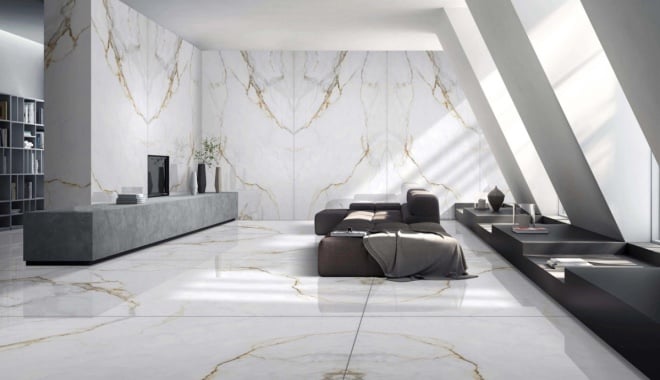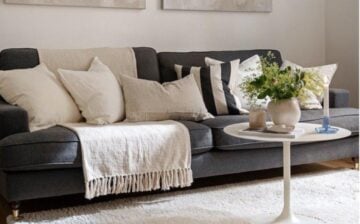Porcelain slabs in modern kitchen design: Durability meets elegance
In today’s kitchens, large-format surfaces have changed how we think about both beauty and practicality. These innovative slabs are quickly replacing older choices thanks to their exceptional resistance to daily wear. Home chefs appreciate materials that stand up to hot pans, knives, and spills without permanent damage or staining.
Unlike porous natural alternatives, these dense panels require little more than a damp cloth to stay spotless, simplifying busy family life. They also come in finishes that mimic marble, concrete, or even weathered wood with impressive realism. Designers can use these options to craft unique spaces that reflect personal taste, whether that’s classic elegance or urban minimalism.
The ability to cover expansive areas seamlessly—without many grout lines—creates a polished, continuous effect that feels modern yet welcoming. For anyone planning a kitchen renovation, exploring porcelain slabs opens up possibilities that blend durability and refined design effortlessly.
Why porcelain slabs are the ultimate choice for wardrobes and cabinets
Beyond the kitchen, these slim yet strong panels are making their mark on built-in wardrobes, closet doors, and cabinetry. One key advantage is their thin profile, which enables handle-free, streamlined looks without adding excessive weight. This supports the move toward minimalism, where lines are clean and uninterrupted.
Unlike many natural materials, these engineered surfaces offer reliable pattern consistency. That matters in cabinetry design, where multiple doors or panels need to align visually. While stone can vary dramatically in color and veining, these slabs deliver a uniform aesthetic that enhances calm, cohesive interiors.
In custom closets, textured finishes can add subtle sophistication while remaining practical for daily use. For designers seeking a versatile option that blends into contemporary spaces seamlessly, materials like these offer a wealth of creative freedom.
Porcelain slabs in commercial interiors: a smart investment for restaurants & retail
In commercial settings, surface choice can shape the entire customer experience. Restaurants, cafes, and shops all need materials that look inviting but hold up under heavy use. High-density panels are prized for their ability to resist scratches, impacts, and spills, ensuring surfaces remain presentable despite daily traffic.
Ease of maintenance is another major factor. In a busy bar or dining area, staff need to clean quickly and thoroughly. Non-porous surfaces simplify sanitation, making them suitable for areas with strict hygiene requirements.
Appearance still matters. These materials can convincingly resemble premium stones, concrete, or metals, bringing visual richness without the weight or fragility of the originals. This makes them popular for bar counters, tabletops, and retail displays that need to impress but also survive constant use.
For commercial designers, these slabs represent a thoughtful balance of durability, hygiene, and aesthetic flexibility.
The versatility of porcelain slabs: from floor-to-ceiling applications
One striking trend is how these panels move beyond typical countertops or cabinetry to transform entire rooms. Designers are embracing floor-to-ceiling installations for dramatic effect, using them as feature walls in living rooms or sleek fireplace surrounds that anchor a space visually.
Large-format production means fewer seams, creating an almost monolithic look that feels expansive and uncluttered. In hallways or entryways, these finishes can introduce refined texture and tone, setting the mood from the first step inside.
Furniture makers are also using slabs creatively for dining tables, coffee tables, and console units. The result is a marriage of practicality and style—surfaces that withstand daily life while adding a sophisticated touch to any room.
Porcelain vs. natural stone: which is better for your interior?
Choosing between engineered surfaces and natural stone comes down to priorities. Genuine marble or granite offers one-of-a-kind patterns that can’t be perfectly duplicated, adding an element of organic character. However, many natural stones are porous, needing sealing and regular care to avoid staining or etching.
Engineered slabs from Alliance Millwork, on the other hand, are designed for consistency and durability. Digital printing technology delivers precise, repeatable patterns that remain cohesive across cabinetry, counters, or walls. Their non-porous nature simplifies cleaning and reduces long-term maintenance headaches.
Weight is another factor—lighter materials are often easier and cheaper to install, especially in renovations where existing structures may not support heavy stone. Ultimately, the choice depends on whether the project calls for natural variation or reliable performance with less upkeep.
Innovative finishes & textures: how porcelain slabs replicate nature
Advances in manufacturing have revolutionized the appearance and feel of these surfaces. High-definition printing can recreate intricate marble veining, concrete’s subtle grit, or even the layered look of terrazzo. Finishes range from ultra-polished to matte or even satin for understated luxury.
Some brands now offer 3D textures that provide tactile depth, giving walls or furniture a sculptural quality. The effect is not only visual but also sensory, enhancing the experience of a space. This flexibility lets designers tailor surfaces to complement diverse styles—from minimal lofts to classic family homes.
By exploring new finishes and treatments, interiors can achieve rich, layered aesthetics without relying on scarce or delicate materials.
Sustainable interior design: how porcelain slabs support eco-friendly spaces
Sustainability is no longer a niche concern in design—it’s central. Engineered panels often use fewer raw resources compared to quarrying large blocks of stone, reducing environmental disruption.
Long-lasting surfaces minimize waste by staying in service for decades, while low VOC emissions help maintain healthier indoor air quality.
We hope you found this blog post on Trends in The Use of Porcelain Slabs in The interior, useful. Be sure to check out our post Improve Your Kitchen With These Budget-Friendly Tips for more great tips!
Have Experience in the Moving Industry? Want an Additional Income Stream? Work With All Around Moving!
There are no recurring expenses, except purchasing your own leads. All Around Movers share profits 50-50% with you from all jobs you book with us. Click here to learn more of the program.






